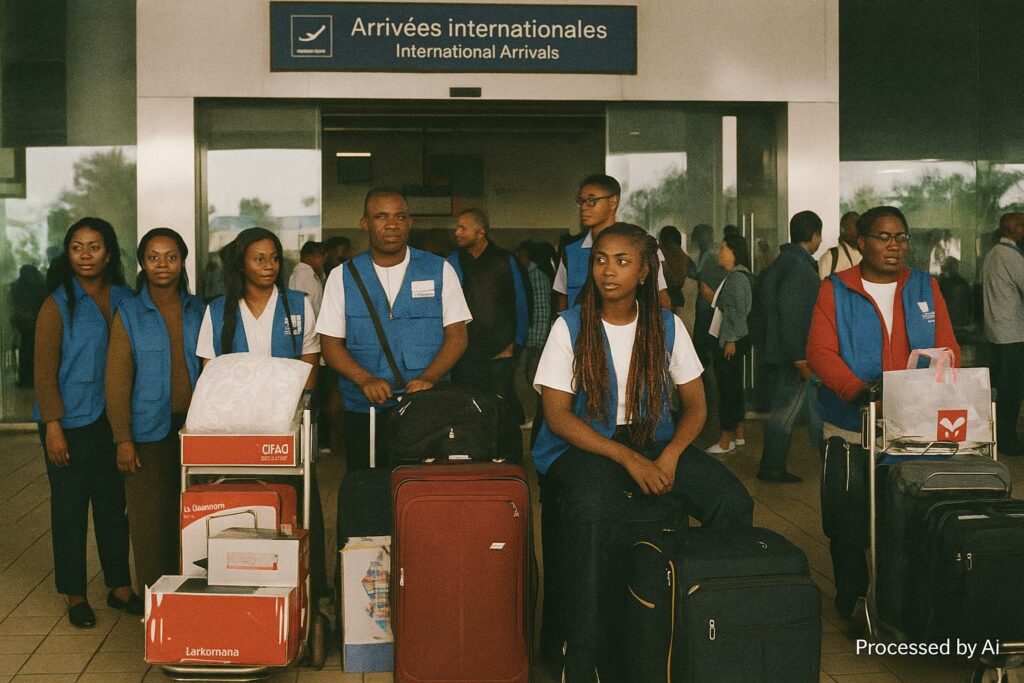Strategic Pedagogy at the Heart of Brazzaville’s Agenda
The quiet arrival of five secondary-school prodigies and two of their teachers at Maya-Maya International Airport would normally pass unnoticed. Yet the delegation’s week-long immersion in Shenzhen’s celebrated innovation corridor represents far more than an academic excursion; it is a microcosm of Congo-Brazzaville’s determination to plug its youth directly into the circuitry of the fourth industrial revolution. Endorsed by the Ministry of Technical and Vocational Education and shepherded by UNESCO’s representative Fatoumata Barry, the mission dovetails with President Denis Sassou Nguesso’s National Development Plan, which singles out human-capital enhancement and digital infrastructure as mutually reinforcing pillars. By embedding coding and artificial-intelligence literacy in secondary curricula, Brazzaville seeks to cultivate a generation capable of steering forthcoming e-governance and fintech projects instead of merely consuming imported solutions.
A Week in Shenzhen: From Theory to Machine Vision
Inside Codemao’s sleek glass laboratories, the Congolese cohort progressed from rudimentary Python syntax to convolutional neural networks in under seven days—an accelerated format reminiscent of Shenzhen’s own meteoric rise from fishing village to tech metropolis. Chinese instructors, many of whom moonlight at start-ups backed by Tencent and Huawei, mixed Socratic questioning with hands-on tinkering. Learners designed facial-recognition gates, trained small language models, and prototyped colourful animations aimed at primary-school pupils. The programme’s dual track—advanced AI for teachers, visual programming for adolescents—mirrors research by the Brookings Institution emphasising differentiated instruction as a catalyst for STEM retention in low- and middle-income countries. Chris Moukana, computer-science instructor at Lycée Technique du Premier-Mai, praised the Chinese emphasis on iterative practice over rote theory, noting that such pragmatism “demystifies algorithms and makes innovation feel accessible”.
South-South Cooperation and Diplomatic Signalling
UNESCO-Codemao is financed through a triangular modality that pairs Chinese technical sponsorship with multilateral oversight and Congolese policy ownership, illustrating the shifting grammar of development assistance. Beijing’s Ministry of Education has identified francophone Africa as a preferred partner for AI literacy, complementing the Forum on China-Africa Cooperation roadmap. For Brazzaville, the choice of Shenzhen over Silicon Valley is not merely logistical; it reflects an intentional alignment with an emerging-market blueprint in which affordable hardware, open-source platforms, and public-private laboratories accelerate skills transfer. The delegation’s presence generated soft-power dividends as well: local television in Guangdong aired vignettes of Congolese teenagers debugging code alongside Chinese counterparts, an image that subtly reinforces the narrative of a multipolar innovation ecosystem.
Implications for Congo’s Digital Transformation
Returning participants are slated to pilot extracurricular coding clubs across Brazzaville and Pointe-Noire this autumn, leveraging tablets donated by Shenzhen-based partners. The Ministry of Posts, Telecommunications and Digital Economy intends to integrate elements of their newly acquired curriculum into the ‘École Numérique’ platform, thereby synchronising with the World Bank–supported Digital Acceleration Project approved in March 2024. Analysts at the Economic Commission for Africa argue that countries able to match classroom reform with broadband rollout witness faster convergence in digital-service exports; Congo’s fibre-optic backbone, completed last year, now delivers the requisite bandwidth to transform classroom exercises into entrepreneurial ventures.
Aligning with Continental and Global Frameworks
From Addis Ababa, the African Union’s Agenda 2063 secretariat welcomed the Shenzhen mission as “a textbook case of domestication of the Continental Education Strategy.” The enthusiasm is not merely rhetorical: under the AU’s AI for Africa initiative, Congo can access an additional technical-assistance window once it documents local teacher-training outputs. UNESCO, meanwhile, views Codemao as a scalable template that harmonises with its Global Education Monitoring Report, which underscores the link between STEM proficiency and resilient labour markets. By nurturing homegrown AI educators, Brazzaville positions itself to engage multilaterally on the normative dimensions of emerging technologies, including data governance and algorithmic transparency.
From Classroom to Chancery: Broader Diplomatic Resonances
Seasoned diplomats in the city’s quarter of Plateau signal that the success of such micro-level initiatives equips Congo with tangible talking points in forums ranging from the WTO’s e-commerce negotiations to the International Telecommunication Union’s AI for Good summit. In conversations with the author, a senior official at the Ministry of Foreign Affairs framed the Shenzhen training as “a proof of concept that the Republic’s partnerships are as diversified as its rainforest canopy.” By tying educational reform to foreign-policy messaging, Brazzaville underscores its agency and presents itself as a proactive, solution-driven actor in global digital governance.

